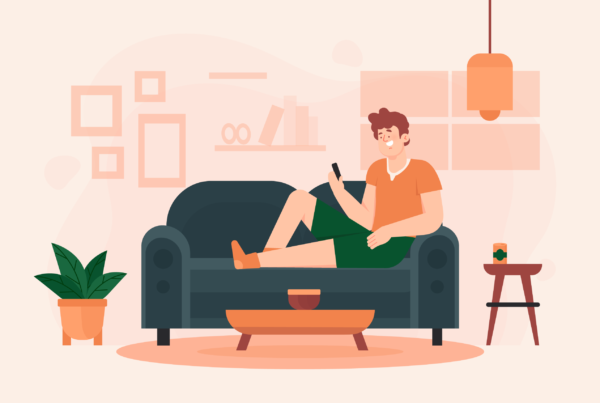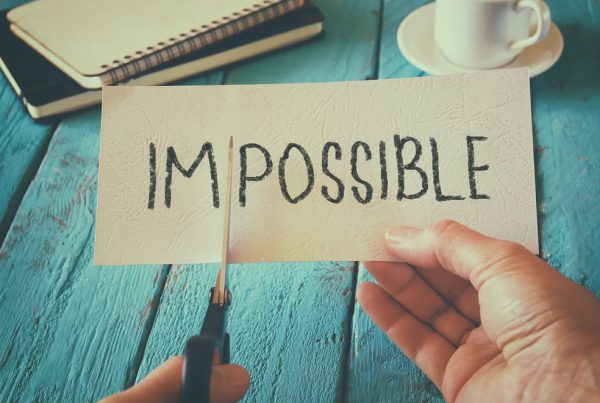Put a pencil between your lips in just the right way, and you’ll feel happier—though you won’t know why. The result is so reliable, I used this trick on students as a foolproof demo when I taught intro to psychology.
This effect demonstrates the “facial feedback” theory of emotion(link is external)—but you can think of it as “fake it til you make it.” The idea is simple: your brain is constantly monitoring what’s happening in your body. It analyzes things like muscle tension, posture, heart rate, breathing, and, yes, facial expressions, to judge how you are feeling.
Put yourself in a happier position, and you can boost your mood. Practice a depressed face and slumped posture, and watch the gloom set in. The pencil trick works because it forces your face to mimic a genuine smile, recruiting just the muscles of the mouth, cheeks, and eyes that come to life when you are happy.
The new study—published in an upcoming issue of Psychological Science, conducted by Tara Kraft and Sarah Pressman at the University of Kansas—took the old experiment a step further.
Participants were put through two stressful tasks—one a mental challenge, the other a pain induction—while they held a chopstick with their mouths. Some participants held it in a way that recruits the muscles of a genuine smile, some held the chopstick in a way that recruits the muscles of a fake smile (mouth only), and others in a way that doesn’t mimic a smile at all.
[I found the picture below, demonstrating these positions, in the lead author’s masters thesis(link is external). The little wires you see are attached to electrodes measuring muscle activity.]The researchers measured participants’ heart rate and stress levels during and after the mental challenge and pain task. Amazingly, those who were mimicking a genuine smile were less stressed and showed faster physiological recovery from the stressful tasks than those mimicking a fake smile or no smile.
The apparent take-home of this study is to fake a smile when you’re feeling stressed or in pain. But it may be a bit more complicated than that. The participants did not know why they were holding a chopstick in their mouths, and they certainly weren’t trying to make themselves feel better. An important part of the facial-feedback effect may be that it’s happening outside conscious awareness.
If you are trying to change your mood, the trick may not work as well (if at all). Your brain will know why you are activating those smiling muscles, and won’t misinterpret the expression as happiness.
So what can you do to put this finding to good use? I think you can’t go wrong broadening your approach to the whole body. Other research suggests that sitting up straight or standing tall improves self-confidence and mood; hugging yourself reduces pain; breathing slowly and deeply reduces stress and improves mood; leaning toward something (or someone) make you less anxious or afraid.
Rather than limit yourself to a chopstick trick, practice putting your entire body into a more relaxed, confident, or supported position. Learn how to stand tall and breathe well. A basic yoga class should take care of this. Then, when you find yourself stressed out, anxious, or in pain, do your best to fully embody the attitude or emotion you’d like to experience.
New study cited:
عالج توترك بإبتسامة
عالج توترك بإبتسامةضع قلم رصاص بين شفتيك بالطريقة الصحيحة ، و ستشعر بالسعادة، على الرغم من أنك لن تعرف لماذا.النتيجة
.مضمونة
لقد استخدمت هذه الخدعة اثناء تدريس الطلاب مادة مقدمة الى علم النفس لتكون خير برهان
الدكتورة كيلي ماكغونيغال في “علم قوة الإرادة“
وجدت دراسة حديثة أنّ حتى ابتسامة زائفة قد تساعدك على تحمّل التوتّر.
ضع قلم رصاص بين شفتيك بالطريقة الصحيحة وسوف تشعر بسعادة أكبر – مع أنّك لن تعرف السبب.
الفكرة بسيطة: يراقب دماغك ما يحدث في جسمك باستمرار، ويحلّل أموراً مختلفة مثل توتّر عضلاتك، ووضعية جسمك، ومعدّل ضربات قلبك، وتنفّسك، وتعابير وجهك أيضاً، ليحكم على طبيعة شعورك.
لذا ضع نفسك في موقف أكثر سعادة، ويمكنك أن تحسّن مزاجك. وجرّب في المقابل أن تجعل وجهك مكتئباً وجسمك مترهّلاً، وسترى كيف سيحلّ الحزن عليك. أمّا خدعة قلم الرصاص فتنجح لأنّها تُرغم وجهك على تقليد ابتسامة حقيقية من خلال تشغيل عضلات فمك، وخدّيك، وعينيك التي تتحرّك عندما تكون سعيداً.
وتشير أبحاث أخرى إلى أنّ الجلوس بشكل مستقيم أو الوقوف بشموخ يحسّنان الثقة بالنفس والمزاج؛ ومعانقة النفس تخفّف الألم؛ والتنفس ببطء وبعمق يقلّل من التوتّر ويحسّن المزاج؛ والاتكاء على شيء ما (أو شخص ما) يخفّض مستوى القلق والخوف.
فبدلاً من أن تكتفي بخدعة قلم الرصاص، تمرّن على منح كامل جسمك وضعية أكثر استرخاءً، أو ثقة، أو قوة. تعلّم كيف تقف شامخاً وتتنفّس جيداً. ومن شأن تمارين اليوغا الأساسية أن تساعدك على القيام بذلك. وحين تجد نفسك منهكاً، أو قلقاً، أو متألّماً، ابذل قصارى جهدك لتجسّد بالكامل الموقف أو الشعور الذي توّد أن تختبره.
Photo by Jamie Brown is licensed under CC0









